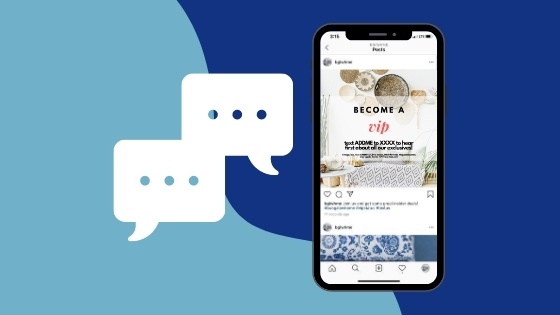Its formal name is short message service or SMS, but most of us know it by its more ubiquitous name: texting. Americans send an estimated six billion text messages per day, 90% of which are read in three minutes or less. When you compare texting to other forms of communication like phone calls and emails, that’s an astonishingly high engagement rate.
So how can your business capitalize on this high-attention, high-response channel? Here, we’ll explain some important best practices to consider as you plot your SMS marketing strategy and share a few campaign ideas to help you get started. But first, let’s discuss why you should strongly consider implementing a text message component to your marketing strategy if you’re not using one already.
The Benefits of SMS for eCommerce
People read text messages, plain and simple. SMS messages have a 98% open rate, which is leaps and bounds above email’s average open rate of between 15 and 25%.
What’s more, people enjoy reading text messages. They’re the most-used form of communication for adults under 50 and the preferred platform for a third of Americans.
Finally, texting presents a compelling opportunity for brands to create meaningful one-on-one interaction with their customers. The instantaneous nature and personalized feel of text messages make them distinct from other forms of branded communication like social media posts and email. When used correctly, they can serve an important need in your overall marketing strategy. We’ll talk about what we mean by using SMS marketing “correctly” next.
Best Practices for Using SMS in Marketing
While SMS messages are highly engaging, they also have a disproportionately high risk of feeling invasive. Send one too many messages or include a detail that’s a little too personal and you can quickly turn a customer off to your brand for good. That’s why it’s so important to abide by a few key best practices when sending them.
Always ask permission. The wording in your opt-in needs to be very clear about the permissions you’re seeking and the fact that the authorization pertains specifically to text messages (i.e. ‘respond YES to opt-in to receive weekly promotions via text!’). Collecting a customer’s phone number during checkout does not equal sufficient permission to send them marketing text messages.
You can take your opt-in one step further–and enhance the customer experience in the process–by asking your customers what type of texts they want to receive. For example, if the opt-in occurs on your website, you might ask the user to self-select into one or more of the following SMS categories: promotions, product news, local store info, and order status updates. When consumers feel in control of the messaging they receive, they are more likely to have a positive attitude towards SMS advertisements.
Send marketing texts sparingly. Multiple texts in a single day is too much, and in most cases that applies to multiple texts in a week, too. We’ve found the sweet spot for brands using SMS marketing to be a handful for texts per month. When you do send a text-based campaign, make it worth the customer’s while. Use them to advertise your very best discounts, flash sales, and exclusive offers only available to text subscribers.
Make it easy to opt-out. In a study of consumers’ willingness to receive text message advertisements, the ability to withdraw at any time was among the top three considerations when deciding whether to opt-in. Don’t make subscribers jump through multiple hoops like clicking a link that then opens a mobile web browser in order to unsubscribe. Make it as simple as texting back the word ‘STOP’ or something similarly straightforward.
Ideas for Incorporating SMS Into Your Marketing
Now that you have a few ground rules to play by, try implementing SMS messages into your marketing with these three ideas.
Send personalized offers.
Research on text-based advertising has found that the more relevant an offer is to a consumer, the more pleased they will be to receive the message. Texting, by nature, is personal; after all, it’s a direct line to the customer’s smartphone, which is usually within arm’s reach. Use the privilege of that access wisely by delivering tailored offers, like product recommendations based on past purchase behavior or new additions that are similar to items the customer has purchased in the past.
If you have brick-and-mortar locations, you can also use personalization in conjunction with location-based targeting to send subscribers messages specific to their local store. For instance, during the coronavirus pandemic, stores might update nearby customers about changes to their hours or inform them of reopening news.
 Remind customers of abandoned carts.
Remind customers of abandoned carts.
Text messages can be a great tactic to recover abandoned carts, especially if the item is running low on stock or just went on sale. Avoid sales-heavy language and instead, frame it as a friendly reminder to help the customer avoid missing out. Shoppers will welcome the message and such efforts contribute to brand loyalty, which is essential in building the customer’s lifetime value.
Use them for effortless order tracking.
Few things are as satisfying as receiving a text that a package you ordered just arrived on your doorstep. Not only is it convenient and smart, but it also creates delight in an unexpected way, which is a long-held tactic that some of the most-loved companies like Apple and Starbucks use to win die-hard fans.
By integrating your order fulfillment application with your SMS platform, you can send customers real-time alerts about the status of their shipment, which helps breed trust and confidence in your brand.
Simplify Your Marketing With Springbot
If you feel overwhelmed by the prospect of adding SMS messaging to your already-full marketing plate, you’re not alone. Springbot can help by streamlining the process of analyzing your eCommerce data and using the insights to drive smart, personalized marketing campaigns that convert.
A user-friendly dashboard brings together your campaigns across email, web, social, and more, while handy automation features save you time and create multi-channel engagements with your customers. With Springbot, you’ll feel empowered rather than overwhelmed about marketing your eCommerce brand. Take the next step by scheduling your complimentary demo today.




